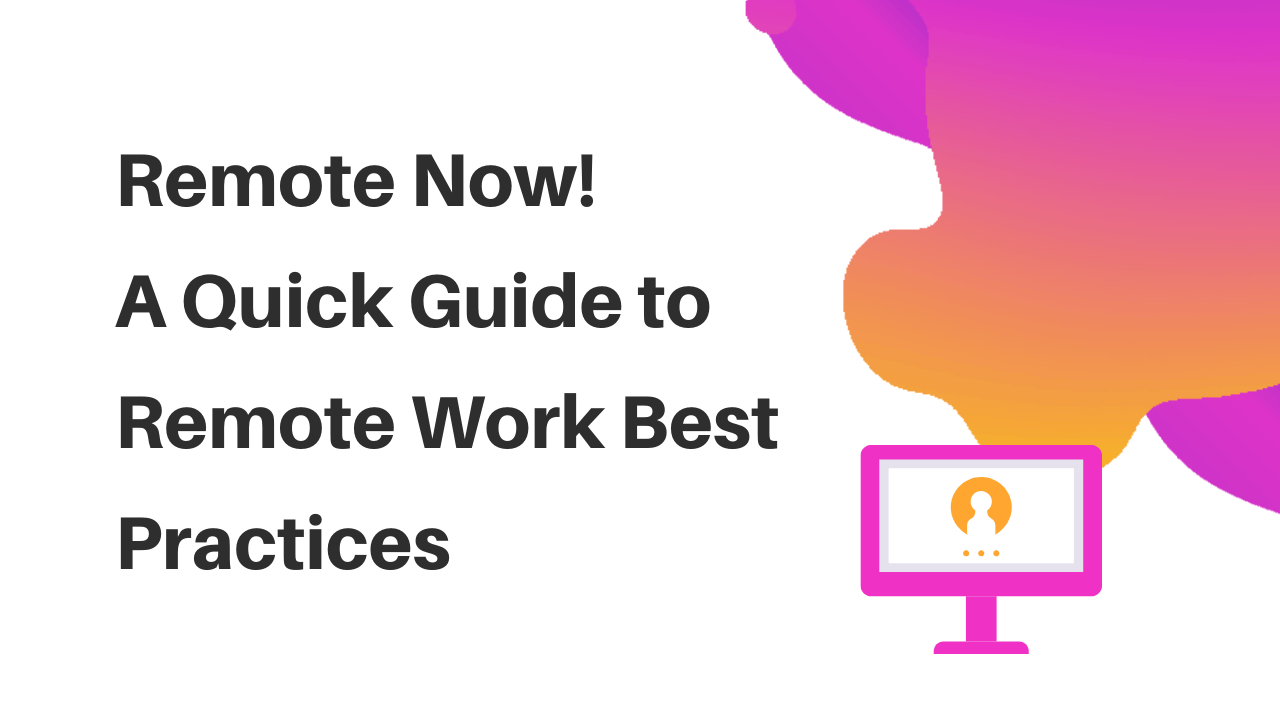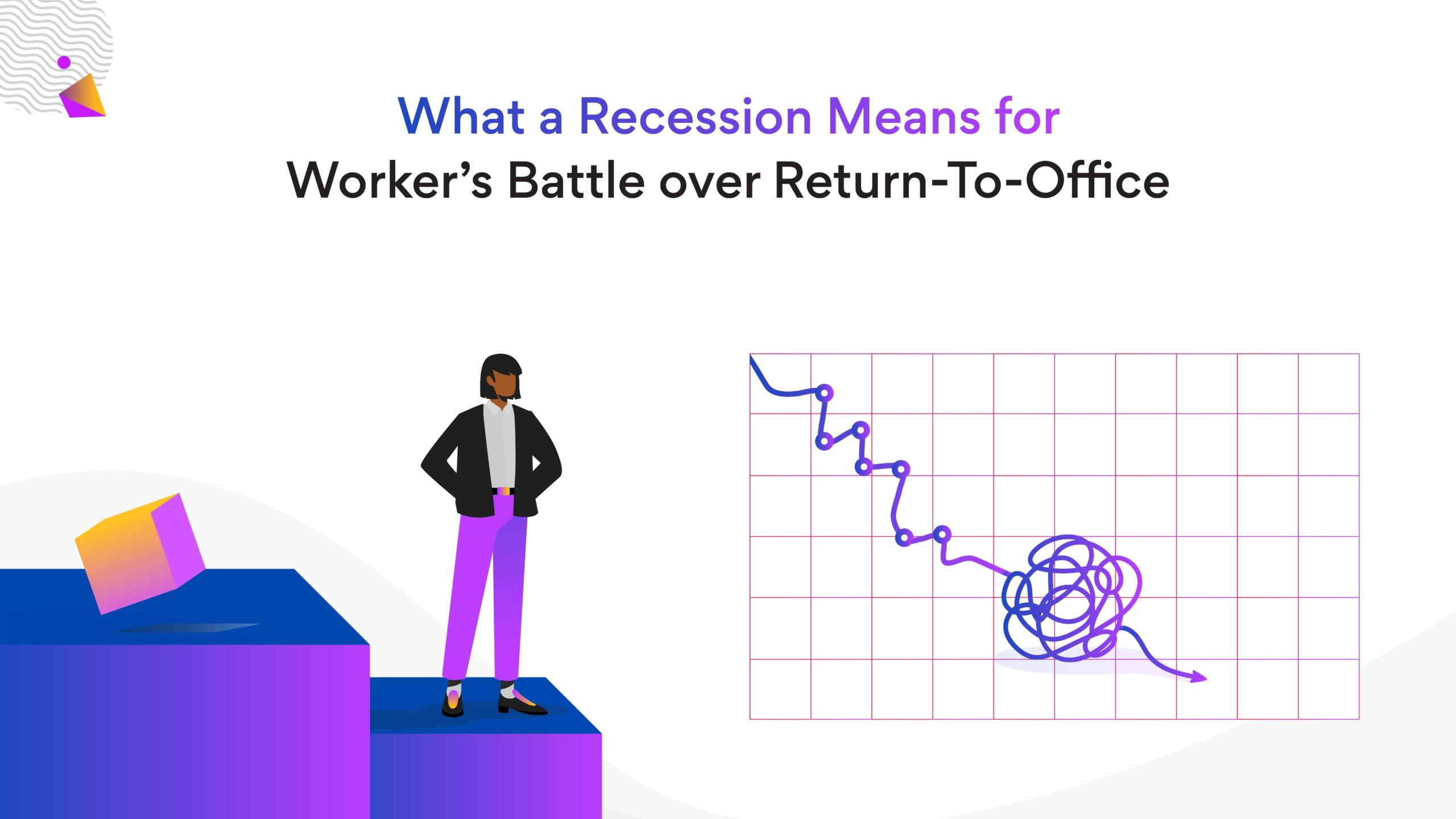Remote Now! A Quick Guide to Remote Work Best Practices
Note: This is the second part in our series on Remote Now, a primer for employees and companies that have been forced to become suddenly remote work focused due to the COVID-19 pandemic. Stay tuned for additional posts over the next few days!
In a world where so many are going suddenly remote there are things we can learn from those who have been working outside a traditional office.
While there are differences in circumstances, job types and personalities, there are also many commonalities for those of us working remotely.
Here is an outline of some best practices to help you, and your team, make the most of remote work.
We will cover:
- Communication
- Social interactions
- Trust
- Online etiquette
- Remote work boundaries
Over Communication is Key
Quick Wins:
- Have agreed communication processes & schedules
- Embrace the remote way of communicating
- Use video in meetings
- Batch communications where appropriate
- Edit and review messages before you send them
- Over communicate = assume nothing – give context and give some more
- Strong documentation as a rule
This is the number one challenge for most people going remote. When working in an office we become accustomed to being able to “swing by” someone’s desk to ask a question. Communication in a remote role forces us to be more deliberate and think ahead of time what we might need when we send a message to a colleague.
It also forces us to not “scratch the itch” straight away. You might like an answer from your colleague straight away, but if you are using asynchronous communication then you need to get comfortable with waiting for a response. But having agreed times that people respond by will help the team to know, and meet, expectation.
And batching communications will help you develop better communications hygiene. Don’t send off a message every time you have a query, put them into one post and edit and review before sending. Ask if you could make your message clearer, or do you need this level of information?
Documentation is a huge part of keeping your team and projects moving forward. Make sure to prioritize good documentation and agree on formats and processes for keeping documents up to date, while ensuring version protection and data security.
Quick definition: Synchronous = real time e.g. phone or video call vs. Asynchronous Communication = you send the information not expecting it to be picked up straight away e.g. email, messages via Slack.
Social Beings and Trust
Quick Wins:
- Schedule social time with the team
- Have the trust talk with team members
- Set expectations around check-ins
- Encourage two sided feedback
- Ensure team members feel supported
- Build serendipity into the team
We are social creatures which helps us to create bonds, growing trust and improving communication and collaboration as trust is developed. Without social interactions this can be greatly slowed down on a remote team. Build some serendipity into how the team interacts, using tools like Donut via Slack helps to bring some randomness into team interactions and encourage the creativity and the social strengthening that happens in unstructured situations.
Therefore making social interactions part of your work week is hugely important. Make time in your daily standup to include time to chat about life in general, while it might feel like a “waste of time” there and then, it is actuallys an investment in improving the team’s effectiveness in the long run.
Schedule in virtual chats, run ice-breakers and when appropriate, organise in person meetups to help your team to bond.
Managers should start open conversations with team members to ensure they feel trusted within their work. As a manager you may need to “check-in” on a team member, but make sure it’s clear that you’re not “checking up on them”, this can feel like unnecessary monitoring. Build clear expectations around when check-ins happen at the team and individual level. Schedule them in, use a format like a daily stand-up to help everyone know where they are on a project, what their next steps are and how they are progressing so far. For individual check-in, ensure that team members know that these are about finding out if they are enjoying their work and feel supported. Make it about you both sharing information and have equal sharing of feedback.
Key to all of this is trust, it can be hard to help people new to remote work to feel like they are trusted. This is vital in helping that person to flourish in a remote role and should be a core part of the management team’s goals. Having the conversation about trust helps, also recognising someone when their work is good is very important.
Online Etiquette and Boundaries
Quick Wins:
- Use video for conference calls
- Use an agenda
- Everyone is remote for the meeting
- Either set specific “office hours” or a set cut off point for work
- Create rituals to help you start and end the day
Because of the nature of many of the tools we are using we need to be extra deliberate about how we an online meeting. It is much easier to mistakenly speak over someone in a video conference call than in a physical meeting room. Create habits that help to ensure people are engaged and feel involved.
If you have a hybrid team and are running a conference call, treat everyone as if they are remote. Having some team members in a room, while your remote colleagues are struggling to hear the conversation happening on site isn’t good meeting etiquette. Have all team members at their desks and dialling in as if they are also remote. This helps to level the field for communication and gives the in office team members a clearer understanding of what is good practice for an online meeting.
And finally boundaries. These are important to ensure people don’t burn out. A struggle for many remote workers is continuing to work late into the evening, or working through lunch. This becomes a matter of diminishing returns, you are no longer as effective and it can take days to come back from burnout. Agree a set hours of work where possible, and suitable, or set yourself certain boundaries like “I don’t work after 8pm on a week day” will help to avoid burn out. It also helps you not needing to wonder if you are ok, or if you could fit in another hour, which is one more decision you would need to make.
The issue is often being able to switch off after a days work. You might have just hit on an amazing idea but now it’s “home time”, using rituals to finish (and start) your day helps you to get into the right mindset and wind down from your work brain. Things like taking a walk outside, listening to a certain type of music, exercise or scheduling a call or coffee with a friend or family member can help to draw the lines around your work.
We all find our own ways of working and are always learning from each other. We’d love to hear what works well for you and your team. Find us on Twitter and let us know your remote working best practices!
Tell us the skills you need and we'll find the best developer for you in days, not weeks.












